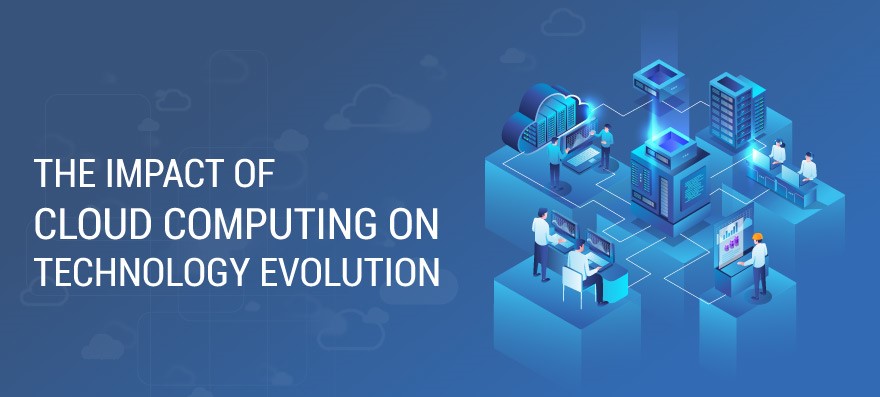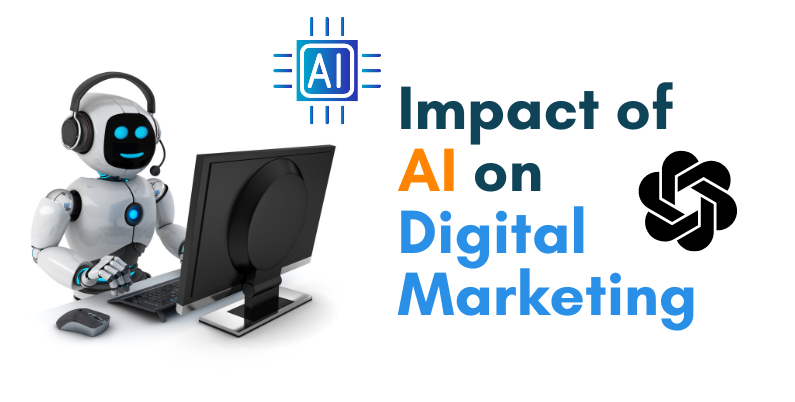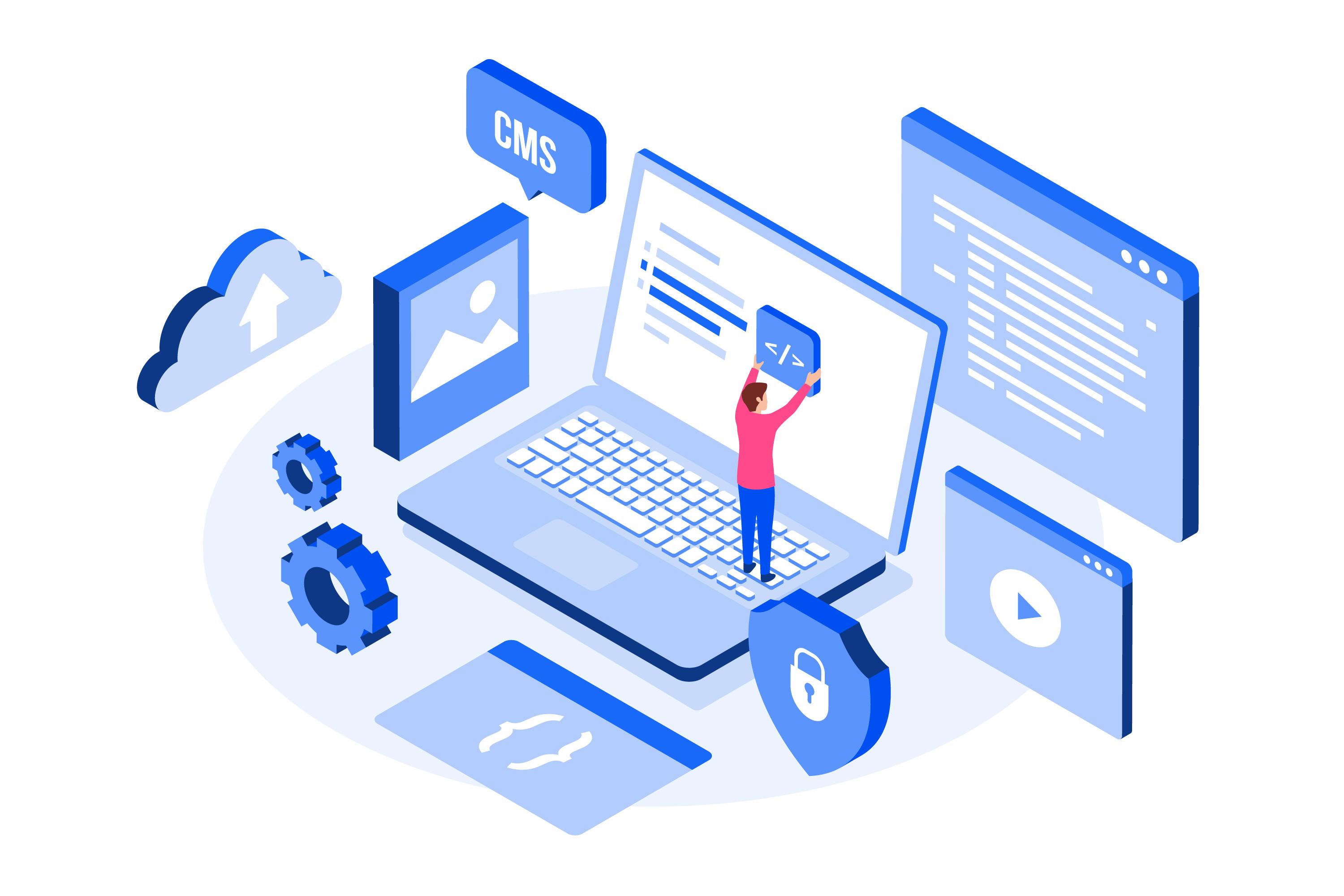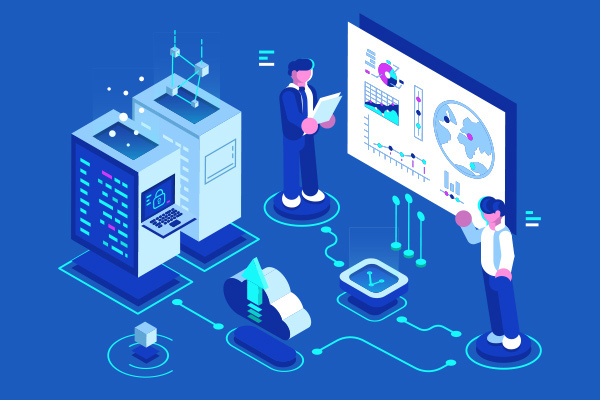THE IMPACT OF CLOUD COMPUTING ON MODERN SOFTWARE DEVELOPMENT

The Impact of Cloud Computing on Modern Software Development
1. Introduction to Cloud Computing
Definition and Overview
Cloud computing. Sounds like something out of a sci-fi movie, right? Well, it's not as futuristic as it sounds. Simply put, cloud computing is the practice of storing and accessing data and programs over the internet instead of your computer's hard drive. It's like having your files and applications floating in a cloud, ready to be accessed whenever and wherever you need them.
Evolution of Cloud Computing
Cloud computing didn't just magically appear one day. It has been evolving over time, just like our taste in fashion (remember those early 2000s frosted tips?). It all started with the advent of virtualization, which allowed multiple virtual machines to run on a single physical server. This made it more efficient to utilize hardware resources and laid the foundation for cloud computing as we know it today. From there, the cloud got bigger and more powerful, offering various services and deployment models to meet different needs.
2. Benefits of Cloud Computing in Software Development
Scalability and Flexibility
Imagine you're throwing a party and suddenly more people show up than you expected (thanks to your social media prowess). With cloud computing, you don't have to panic and run to the store for more snacks. Cloud platforms allow software developers to easily scale their applications up or down based on demand. Need more server power? Just a few clicks away. It's like having an elastic band for your software, ready to stretch or shrink as needed.
Cost Efficiency
Money doesn't grow on clouds (sadly), but cloud computing can help your software development budget go further. Instead of investing in expensive hardware and infrastructure, cloud platforms offer a pay-as-you-go model. You only pay for the computing resources you actually use. So, whether you're a big corporation or a small indie developer, cloud computing levels the playing field and saves you from breaking the bank.
Improved Collaboration and Accessibility
Remember the days of emailing files back and forth, hoping you had the latest version? Thanks to the cloud, those days are behind us (cue the celebratory dance). Cloud-based collaboration tools allow software development teams to work seamlessly together, regardless of their physical locations. Everyone can access the same files, make changes in real-time, and stay on top of project updates. It's like having a virtual office where everyone can pop in and out whenever they want.
3. Challenges and Limitations of Cloud Computing in Software Development
Security and Privacy Concerns
While the cloud has many silver linings, there are some storm clouds to be aware of. Security and privacy concerns loom over the heads of those considering cloud computing for software development. Storing sensitive data in the cloud means putting your trust in the hands of cloud service providers. Will they keep your data safe from hackers and breaches? It's a valid question, and one that requires careful consideration and robust security measures.
Reliability and Downtime Risks
Even clouds have their stormy moments. Cloud platforms aren't immune to occasional downtime or service disruptions. When your software development relies on the cloud, any interruptions can bring productivity to a screeching halt. It's like having a sudden power outage in your office building, and you're left twiddling your thumbs until the lights come back on. It's important to have contingency plans and redundancies in place to minimize the impact of such disruptions.
Vendor Lock-in
Choosing a cloud service provider is like signing a long-term lease for your software development needs. Once you're in, it can be difficult to switch providers or migrate your applications to another platform. This can result in what we call vendor lock-in, where you're at the mercy of your chosen provider. It's like being stuck with a landlord who refuses to fix your leaky faucet. So, it's important to choose your cloud provider wisely and consider the long-term implications.
4. Adoption of Cloud Computing in Modern Software Development
Cloud Adoption Trends
Cloud computing has become more mainstream than avocado toast (yes, we went there). Businesses of all sizes are jumping on the cloud bandwagon, and the trend shows no signs of slowing down. From startups to enterprise giants, cloud adoption has become a must in modern software development practices. It offers the agility, scalability, and cost savings that businesses crave in today's fast-paced digital world.
Factors Influencing Adoption Decisions
When deciding whether to adopt cloud computing, software developers consider a range of factors. It's like choosing between pizza toppings – you have to find the ones that suit your taste. Cost savings, scalability, and accessibility are often top priorities. Security and compliance requirements also play a significant role in decision-making. Additionally, teams need to assess their existing infrastructure and evaluate the feasibility of migration to the cloud. It's a careful balancing act between risks and rewards.
So, there you have it. The impact of cloud computing on modern software development practices is vast and transformative. From scalability and cost savings to collaboration and security concerns, the cloud has reshaped how software is developed and deployed. So, grab your umbrella (or maybe a cloud-shaped balloon) and get ready to soar into the future of software development in the cloud.
5. Impact of Cloud Computing on Agile Development Methodologies
Agile Principles and Cloud Integration
Gone are the days of traditional software development methods that involved long planning cycles and rigid processes. Agile development methodologies have taken the stage, emphasizing flexibility, collaboration, and continuous iteration. With the advent of cloud computing, Agile practices have been amplified, allowing teams to work seamlessly across different locations, share resources, and deliver software at an accelerated pace. The cloud enables real-time collaboration, providing a virtual playground for Agile teams to work together and iterate on their software rapidly.
Cloud-based Tools and Technologies for Agile Development
Cloud-based tools and technologies have revolutionized how Agile teams work. From project management and issue tracking tools to code repositories and continuous integration and delivery (CI/CD) pipelines, the cloud offers a plethora of options for Agile development. These tools enable teams to manage their projects, track progress, and automate software releases, all while providing easy accessibility and scalability. With cloud-based tools, Agile teams can focus on what they do best: delivering high-quality software, minus the hassle of managing infrastructure.
6. Security and Privacy Considerations in Cloud-based Software Development
Data Protection and Compliance
When it comes to cloud-based software development, security and privacy are of utmost importance. Storing sensitive data in the cloud brings concerns about data protection and compliance with regulations like GDPR and HIPAA. Developers must be mindful of securing data at rest and in transit, implementing encryption, access controls, and regular security audits. Additionally, they should choose cloud providers that adhere to strict compliance standards to ensure data privacy and prevent unauthorized access.
Identity and Access Management
With the cloud, multiple users from different teams may need access to software development resources. Identity and access management (IAM) becomes crucial in controlling who can access what in the cloud environment. Implementing strong authentication mechanisms, role-based access controls, and monitoring user activities are essential to prevent unauthorized access and maintain the integrity of the software development process.
Threats and Mitigation Strategies
Cloud-based software development introduces unique security threats. From malicious actors trying to exploit vulnerabilities to accidental exposure of sensitive information, developers must be aware of these risks and implement appropriate mitigation strategies. Conducting regular vulnerability assessments, employing intrusion detection systems, and implementing robust backup and disaster recovery mechanisms are vital to safeguarding cloud-based software development environments.
7. Future Trends and Innovations in Cloud-based Software Development
Serverless Computing and Function-as-a-Service (FaaS)
Serverless computing and Function-as-a-Service (FaaS) are emerging trends in cloud-based software development. With serverless architectures, developers can focus solely on writing code without worrying about infrastructure management. Serverless platforms automatically scale resources based on demand, reducing costs and enabling faster development cycles. FaaS allows developers to execute functions in response to events, making it ideal for microservices architectures and event-driven applications.
Edge Computing and Distributed Cloud
Edge computing and distributed cloud are reshaping software development practices by bringing processing power closer to the data source. With the Internet of Things (IoT) and edge computing, developers can build applications that thrive on low-latency, real-time data processing. By distributing cloud resources across different geographical locations, distributed cloud environments improve performance, reliability, and fault tolerance.
Artificial Intelligence and Machine Learning in Cloud Development
Artificial Intelligence (AI) and Machine Learning (ML) are transforming cloud-based software development. Cloud platforms provide the necessary infrastructure and services for training and deploying AI models at scale. Developers can leverage cloud-based AI APIs and ML frameworks to build intelligent applications without having to develop complex algorithms from scratch. AI and ML in the cloud are opening up new possibilities for smart, data-driven software solutions.
8. Conclusion: The Transformational Impact of Cloud Computing in Modern Software Development
In conclusion, cloud computing has undeniably revolutionized modern software development practices. The benefits it offers, such as scalability, cost efficiency, and improved collaboration, have transformed the way applications are built and deployed. However, the adoption of cloud computing also poses challenges, particularly in terms of security and privacy. As the industry continues to evolve, future trends like serverless computing, edge computing, and AI-driven development are poised to further shape the landscape of cloud-based software development. Overall, cloud computing has become an indispensable tool for modern software developers, providing them with the tools and infrastructure necessary to innovate and deliver software solutions faster and more effectively than ever before.
FAQ
1. What is cloud computing and how does it impact software development?
Cloud computing refers to the delivery of computing services over the internet, including storage, processing power, and applications. Its impact on software development is profound, as it enables developers to access and utilize scalable resources and infrastructure on-demand. This allows for faster development, testing, and deployment of applications, as well as enhanced collaboration among development teams.
2. What are the key benefits of using cloud computing in software development?
Cloud computing offers numerous benefits in software development, including:
- Scalability and flexibility: Developers can easily scale resources up or down based on their needs, ensuring optimal performance and cost-efficiency.
- Cost efficiency: Cloud computing eliminates the need for upfront infrastructure investments, reducing hardware and maintenance costs.
- Improved collaboration and accessibility: With cloud-based development tools, teams can work together seamlessly, accessing and sharing code, documents, and resources from anywhere, at any time.
3. Are there any challenges or limitations associated with cloud computing in software development?
While cloud computing brings significant advantages, it also presents challenges, such as:
- Security and privacy concerns: Storing and processing data in the cloud may raise concerns about data protection, compliance, and unauthorized access.
- Reliability and downtime risks: Dependence on cloud service providers means that any downtime or service interruptions can impact development and deployment timelines.
- Vendor lock-in: Migrating applications from one cloud provider to another can be complex and costly, potentially resulting in vendor lock-in.
4. What are some future trends shaping cloud-based software development?
The future of cloud-based software development holds exciting possibilities, including:
- Serverless computing and Function-as-a-Service (FaaS): Developers can focus on writing code without managing infrastructure, as the cloud provider takes care of resource allocation and scaling.
- Edge computing and Distributed Cloud: With the rise of IoT devices and the need for low-latency processing, moving computing power closer to the edge of the network enables faster response times.
- Artificial Intelligence and Machine Learning in cloud development: Cloud platforms offer powerful AI and ML services, enabling developers to incorporate intelligent features into their applications without having to build complex models from scratch.






















